Path of Exile Game Review
Path of Exile was released in 2013 and for many years became almost the best multiplayer action/RPG, which was looked up to by other developers - many Path of Exile mechanics were adopted in other games, and its huge skill tree became almost a genre canon. Today in our review we will tell you what makes this game unique and exciting.
About the world and the story
At first it seems that, like in many Diablo-centric action/RPGs, Path of Exile's story and world are not well-developed and play only a background role. However, this is not the case. The history and universe of the continent of Raclast, where the main events unfold, is very detailed. Here gods were born from mortals and fought among themselves, entire empires and civilizations were created and fallen.
In this case, the conflict between the gods and the cataclysm, which happened because a mortal magician wanted to become a god himself and submitted a certain Beast, a super being created by celestials - with his help, he began to reshape the world as he saw fit. In the end, of course, the situation got out of hand, the world was polluted, people began to go crazy, attack each other and turn into the undead.
By the time the game began, civilization on Raclust was almost destroyed. But on the island of Oriat, under the strict dictatorship of the priests, life was more or less developing. It was from here that exiles and criminals were exiled to the cursed mainland. Our hero (or heroine) was among them.
By the time the game began, civilization on Raclust was almost destroyed. But on the island of Oriat, under the strict dictatorship of the priests, life was more or less developing. It was from here that exiles and criminals were exiled to the cursed mainland. Our hero (or heroine) was among them.
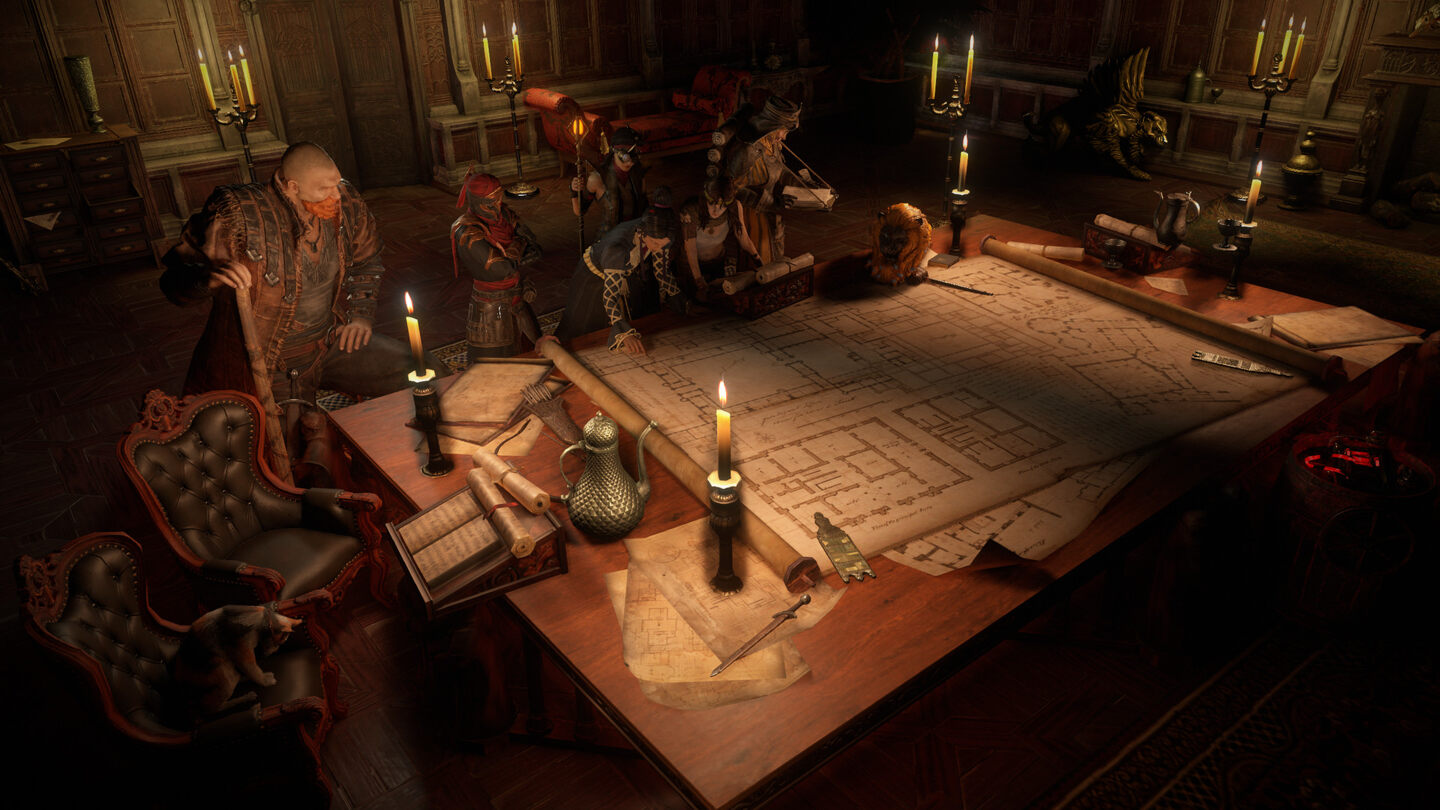
Having survived a shipwreck, we are forced to survive, fight numerous monsters and help the locals. As we progress through the massive story campaign (which includes 10 acts), the story picks up steam, local problems take a back seat, and we begin to fight the gods and delve into the dark past of Raclast, which led to the catastrophe. The very insidious wizard and his subordinate Beast will, of course, also have to meet..
It's clear that the quests boil down to "find, fetch, kill," but that's perfectly normal for the genre. Plus, the quests are interestingly presented, we always have someone to talk to and learn more about the world and the current situation. And there are always several quests at once, and it's up to us to choose where to go first.
It's clear that the quests boil down to "find, fetch, kill," but that's perfectly normal for the genre. Plus, the quests are interestingly presented, we always have someone to talk to and learn more about the world and the current situation. And there are always several quests at once, and it's up to us to choose where to go first.
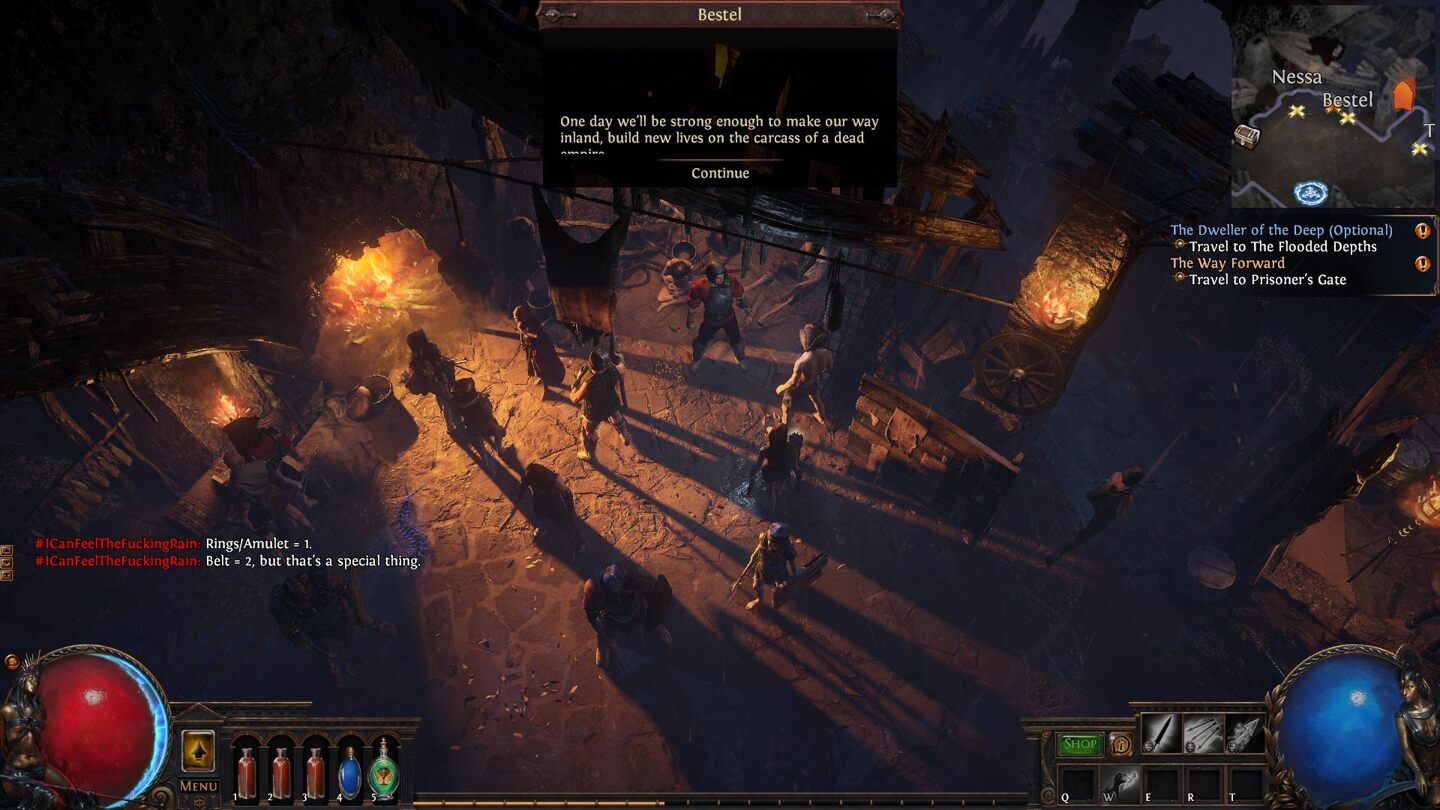
About the trials and the Atlas of Worlds
There really are a lot of adventures. And in addition to the plot and side quests, there are plenty of other challenges. You can always go to the Desecrated Lands and try to survive there. These areas are randomly generated, there are hardening game modifiers, and at the end of the strong boss is waiting, but the rewards are more generous, including valuable skill stones. In addition, in the tainted locations we learn something new about the world of Raclast each time.
As we travel across the continent, we gradually encounter the special trials of Ascent, which are part of a large Labyrinth littered with a variety of traps. After passing all six, we can actually get into the Labyrinth itself - it's a generated dungeon, where in addition to the traps there are also puzzles and dangerous monsters. Once we pass the Labyrinth, we get access to new gameplay mechanics - in particular, the revival classes and their skills, as well as the altar for enchanting items. And the labyrinths vary in difficulty level - Cruel, Ruthless, and Eternal.
As we travel across the continent, we gradually encounter the special trials of Ascent, which are part of a large Labyrinth littered with a variety of traps. After passing all six, we can actually get into the Labyrinth itself - it's a generated dungeon, where in addition to the traps there are also puzzles and dangerous monsters. Once we pass the Labyrinth, we get access to new gameplay mechanics - in particular, the revival classes and their skills, as well as the altar for enchanting items. And the labyrinths vary in difficulty level - Cruel, Ruthless, and Eternal.
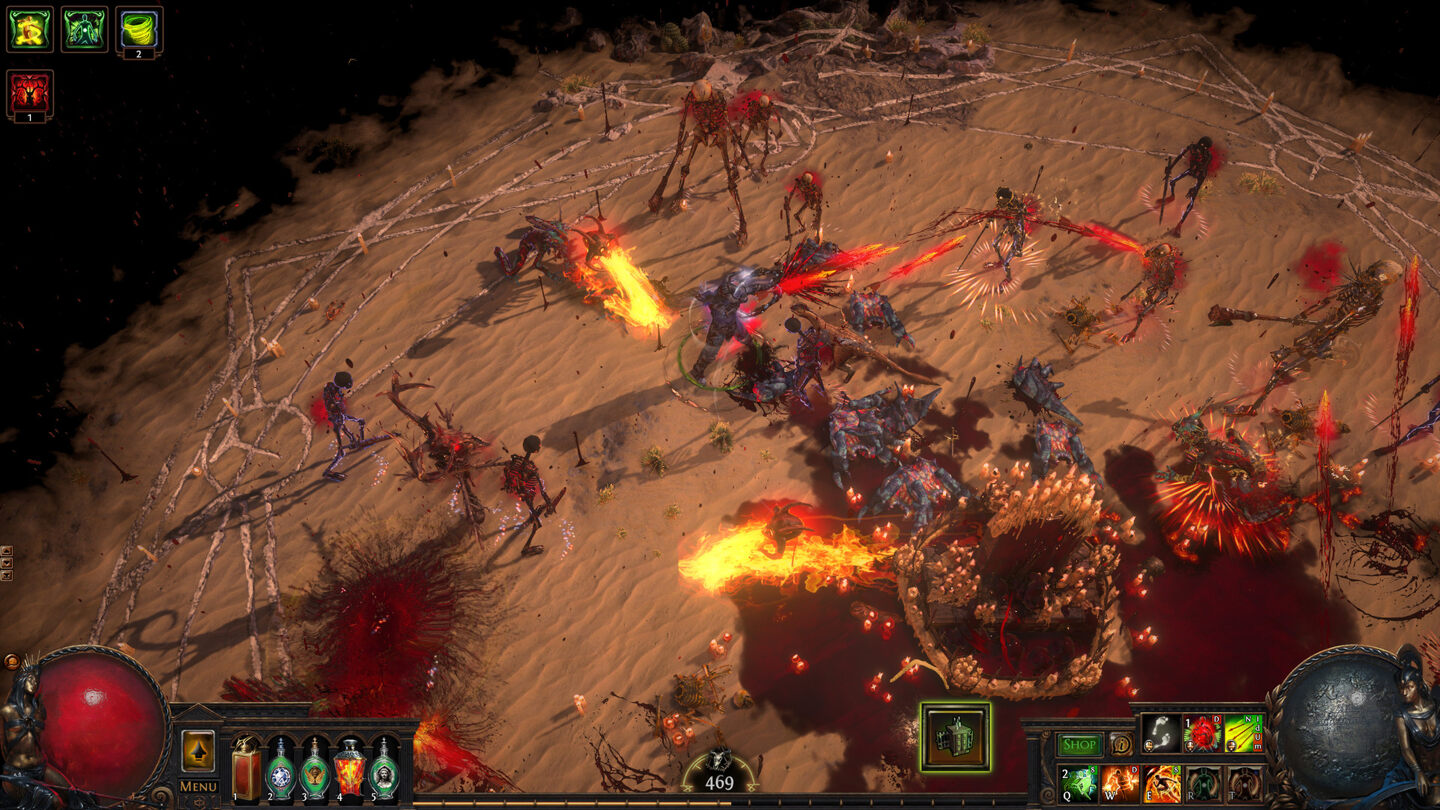
By the way, it should be noted that at the start of the game we choose the level of difficulty of the whole game and depending on this we get into different Leagues - this is a unique mechanics of Path of Exile. In the standard league the hero is revived after death, and in hardcore league he dies and goes to the normal league, keeping the equipment and learned skills. And in the future, almost all trials take place within one league or another.
In addition, there are tasks of masters. These special characters appear at random and give you five new quests each day (one from each wizard). For completing these quests we not only get unique items, recipes for crafting, decorations for our hideout (which is our personal mansion where we can invite wizards and interact with them there), but sometimes we also get new mechanics.
In addition, there are tasks of masters. These special characters appear at random and give you five new quests each day (one from each wizard). For completing these quests we not only get unique items, recipes for crafting, decorations for our hideout (which is our personal mansion where we can invite wizards and interact with them there), but sometimes we also get new mechanics.

And after completing the task of Master Zana, the so-called Atlas of Worlds becomes available to the player. In fact, this is a network of high-level maps and locations for "endgame" with unique enemies, challenges, bosses and rewards. And after the first passage of the location there is a chance to get the same maps, but a higher level, where will fall out more rare items.
It is the passing of the intricate Atlas of Worlds and gaining access to new cards that make up the main occupation of high-level players.
It is the passing of the intricate Atlas of Worlds and gaining access to new cards that make up the main occupation of high-level players.
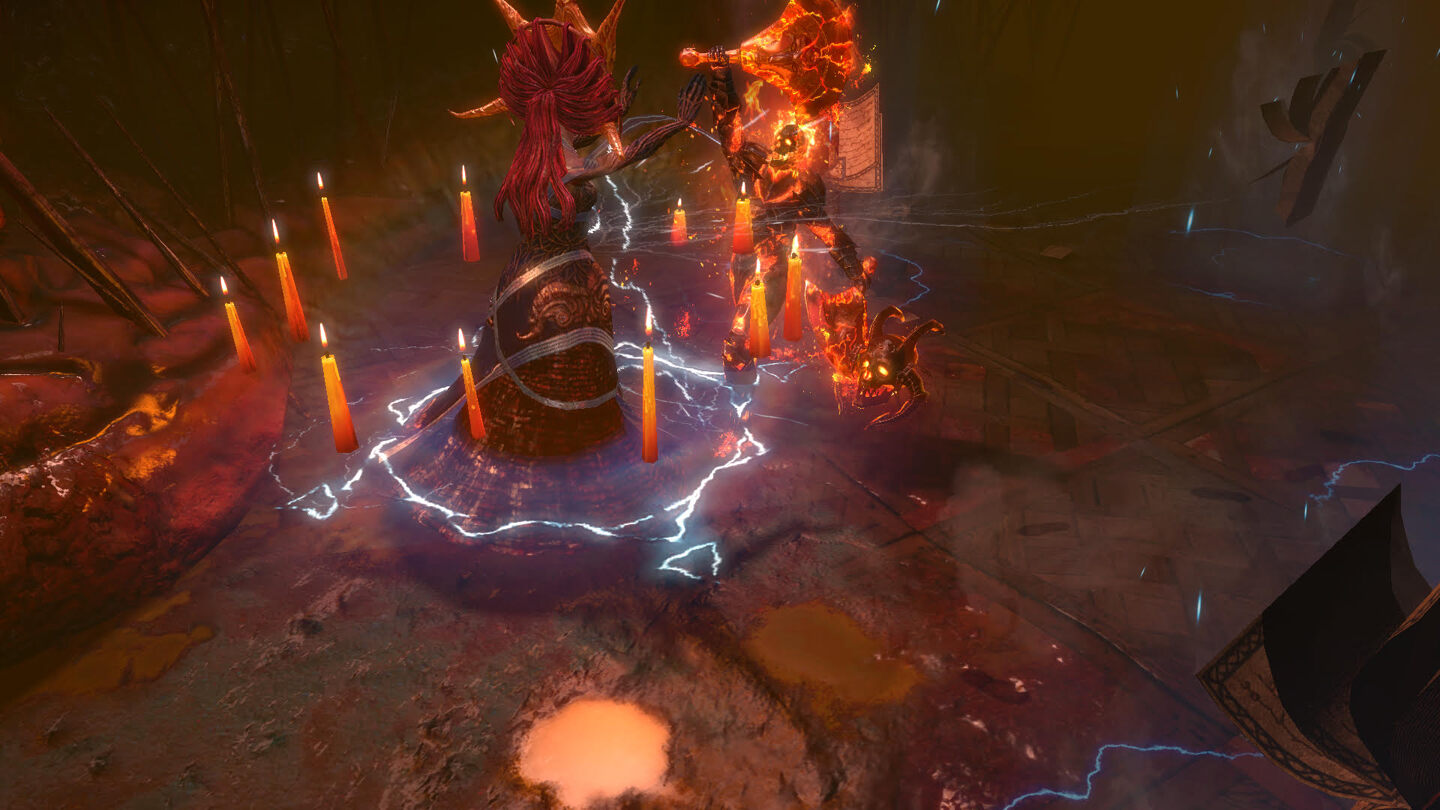
About Cooperative and PvP
Naturally, it is better to go to such trials in a group with other players. Path of Exile has a very convenient system for searching and selecting "teams", including friends. And players can configure how the trophies will be distributed to the group members - for example, they can be so that they will be distributed randomly, only to those who were near, or they have to snaffle them on the principle of "who had time, the same goes".
There is in Path of Exile and PvP, that is, fighting between the players. They take place in three modes - one-on-one duels, team battles of three against three and again team "Capture the Flag". At the same time, there are two PvP modes - one of them has restrictions on the level of competing characters (maximum level 28), in the other there are no such restrictions, and there can participate all the characters from any league. Therefore, the second mode is focused on high-level players with powerful equipment.
There is in Path of Exile and PvP, that is, fighting between the players. They take place in three modes - one-on-one duels, team battles of three against three and again team "Capture the Flag". At the same time, there are two PvP modes - one of them has restrictions on the level of competing characters (maximum level 28), in the other there are no such restrictions, and there can participate all the characters from any league. Therefore, the second mode is focused on high-level players with powerful equipment.

About classes and skills
There are seven basic character classes available in Path of Exile today. A witch is a pure mage who draws strength from her intellect and damages enemies with spells, elements and curses at a distance. She is surrounded by a protective shield and can summon the undead. After the first passage of the Labyrinth she becomes available to advanced specializations (rebirth classes) - she can become a necromancer, elemental mage or occultist.
Another mage, but more versatile, skillfully combining strength and intelligence, is considered a Priest. He can then turn into an Inquisitor, Defender (essentially a support class, indispensable in a group) or Hierophant, who does not fight directly himself, but uses totems and spirit power.
The Bandit relies on speed, fast weapons (like daggers), traps, mines and battle control. And his key characteristics are a combination of agility and intelligence. Due to a small amount of armor and a focus on control, the bandit is considered one of the most difficult classes, but competent use of his pluses can turn this class into a very strong character. Rebirth classes for the bandit are assassin, saboteur, specializing in traps and mines, and the more versatile rascal.
Another mage, but more versatile, skillfully combining strength and intelligence, is considered a Priest. He can then turn into an Inquisitor, Defender (essentially a support class, indispensable in a group) or Hierophant, who does not fight directly himself, but uses totems and spirit power.
The Bandit relies on speed, fast weapons (like daggers), traps, mines and battle control. And his key characteristics are a combination of agility and intelligence. Due to a small amount of armor and a focus on control, the bandit is considered one of the most difficult classes, but competent use of his pluses can turn this class into a very strong character. Rebirth classes for the bandit are assassin, saboteur, specializing in traps and mines, and the more versatile rascal.
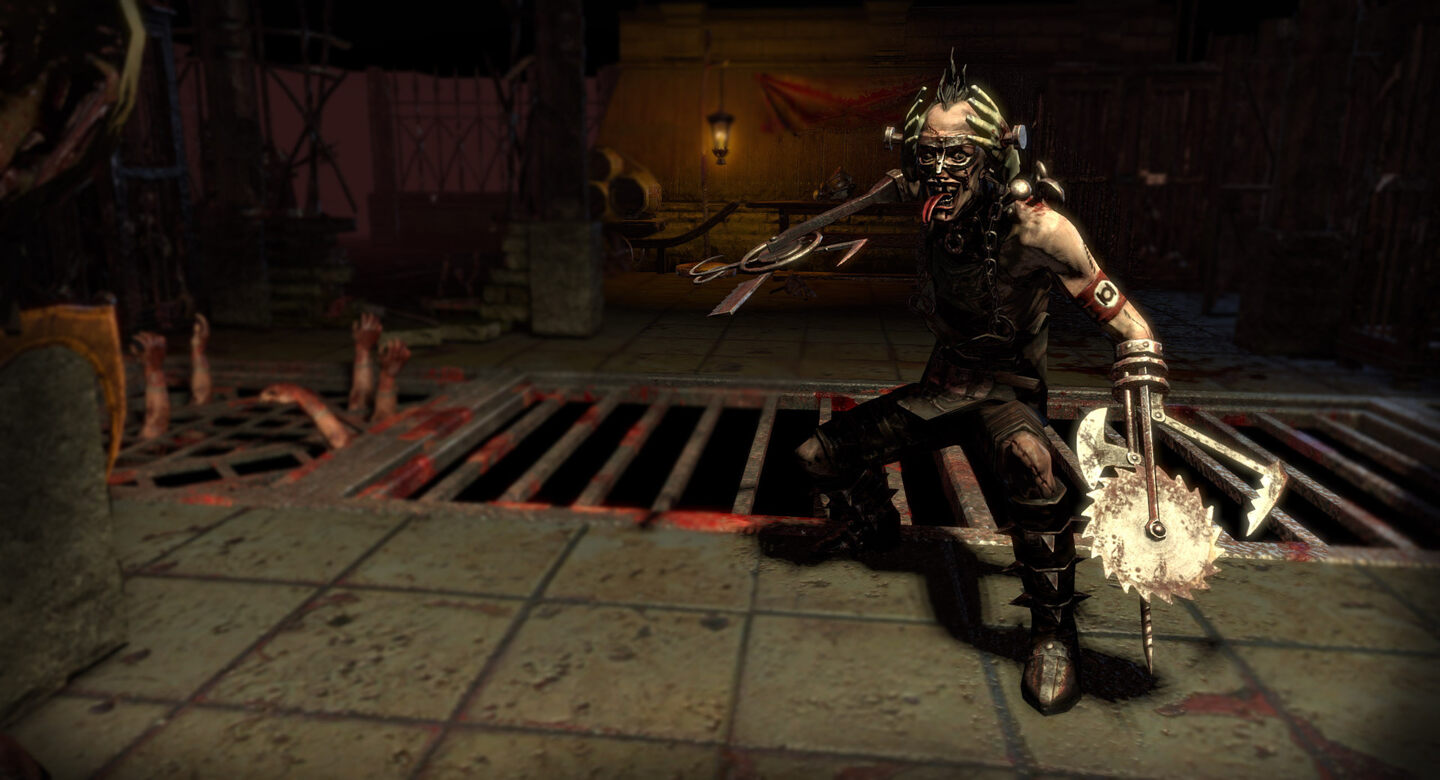
Specialized in shooting and agility, the Huntress is fast and deadly (especially at long range), and after passing the Maze, she can be turned into a sniper, tracker or raider, who, killing enemies, gets charges of rage, battle rage or ghost form.
Gladiator is interesting because he does a lot of damage using shield and sword, two-handed or paired weapons, and dodges attacks well. Rubaka, Champion and Dimacher (specialist in paired weapons) are his revival classes. Savage's class is pure strength and damage, but he can also cheer up his allies with his shouts and cries. After passing the Labyrinth he transforms into a Berserker, Chieftain (able to deal fire damage from totems and skills) or Conqueror.
Gladiator is interesting because he does a lot of damage using shield and sword, two-handed or paired weapons, and dodges attacks well. Rubaka, Champion and Dimacher (specialist in paired weapons) are his revival classes. Savage's class is pure strength and damage, but he can also cheer up his allies with his shouts and cries. After passing the Labyrinth he transforms into a Berserker, Chieftain (able to deal fire damage from totems and skills) or Conqueror.
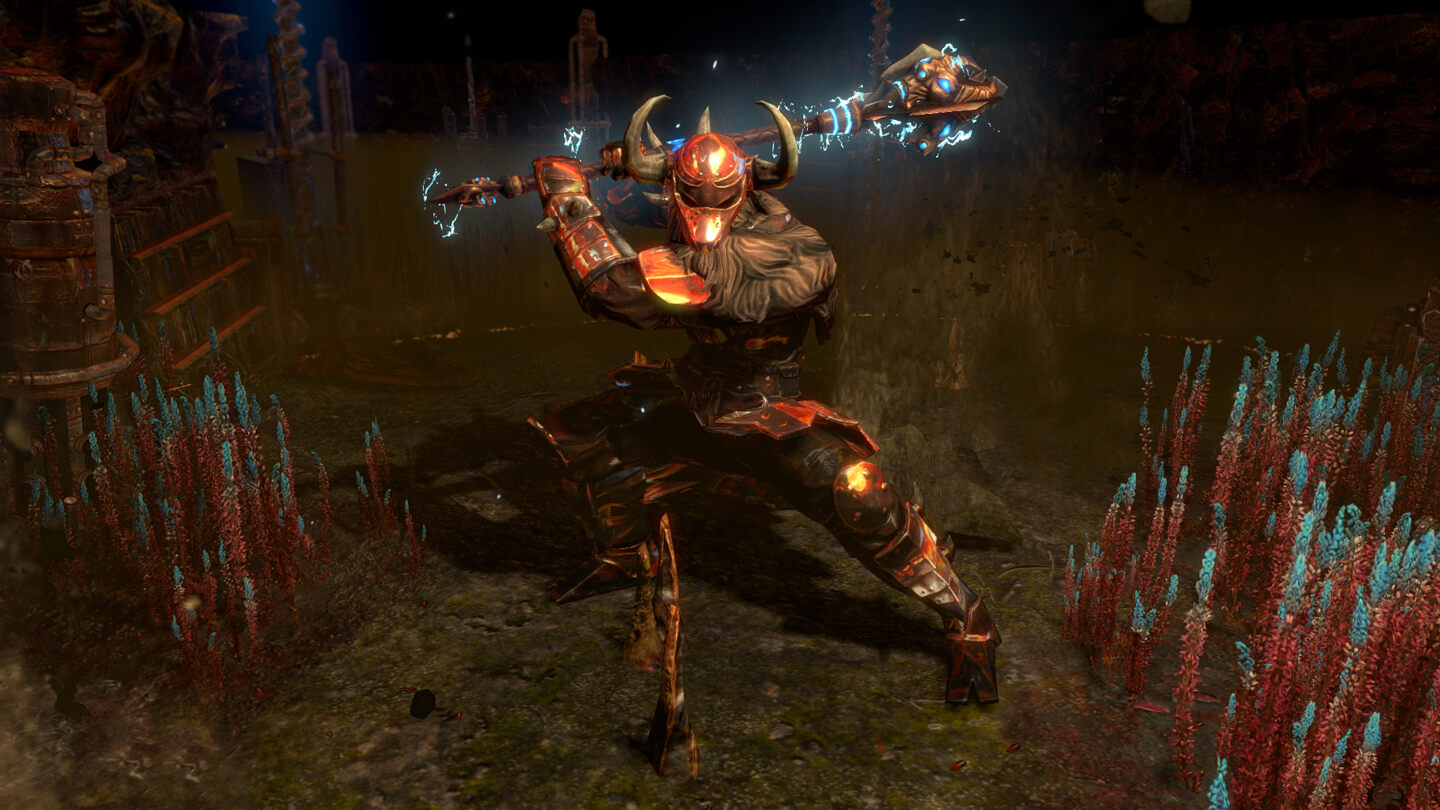
Finally, there is also such an interesting class as the Noblewoman. This is a unique, versatile character who equally combines strength, agility, and intelligence. She is difficult to develop and therefore becomes available only in the third act of the campaign. And she has only one revival class, the Ascendant, which uses the passive skills of the other classes, albeit with reduced strength.
However, the whole role system in Path of Exile is so flexible that the starting class choice is not so important as in many other action/RPGs. First of all, any class can move quite freely through a huge tree of passive skills in any direction. Everything depends on our choice - for example, it's up to you to develop the same Priest first, a branch of strength or intelligence.
However, the whole role system in Path of Exile is so flexible that the starting class choice is not so important as in many other action/RPGs. First of all, any class can move quite freely through a huge tree of passive skills in any direction. Everything depends on our choice - for example, it's up to you to develop the same Priest first, a branch of strength or intelligence.

Second, all the active skills we use in combat are not class-dependent at all - they are the responsibility of the skill stones that we insert into weapons and equipment. And as we use them, these stones are pumped up. You can use two weapon tabs, switching, for example, from sword to bow and back. Accordingly, we also switch between the skills that we choose for one or another weapon. This combination of a huge number of passive skills and skill stones allows us to flexibly create our own unique builds (character specializations).
In addition, you can strengthen your character with the abilities of the Gods - they are unlocked after killing one of the deities in the second half of the story campaign.
In addition, you can strengthen your character with the abilities of the Gods - they are unlocked after killing one of the deities in the second half of the story campaign.

There are 12 Gods in total in the game, and we can have one power of the elder God and one of the younger God. And they are allowed to enhance them by capturing the souls of bosses defeated on the Atlas of Worlds maps. These divine boosts can be freely varied and replaced in the cities - this only emphasizes the flexibility of the local role-playing system.
And, of course, Path of Exile pays plenty of attention to traditional character enhancement mechanics such as crafting and improving equipment items that vary in rarity and coolness. Also, passive skills can be improved and given new properties with more or less powerful gems. And the properties of the gems themselves are changed by special spheres. This also further increases the room for experimentation with the characters' abilities.
And, of course, Path of Exile pays plenty of attention to traditional character enhancement mechanics such as crafting and improving equipment items that vary in rarity and coolness. Also, passive skills can be improved and given new properties with more or less powerful gems. And the properties of the gems themselves are changed by special spheres. This also further increases the room for experimentation with the characters' abilities.
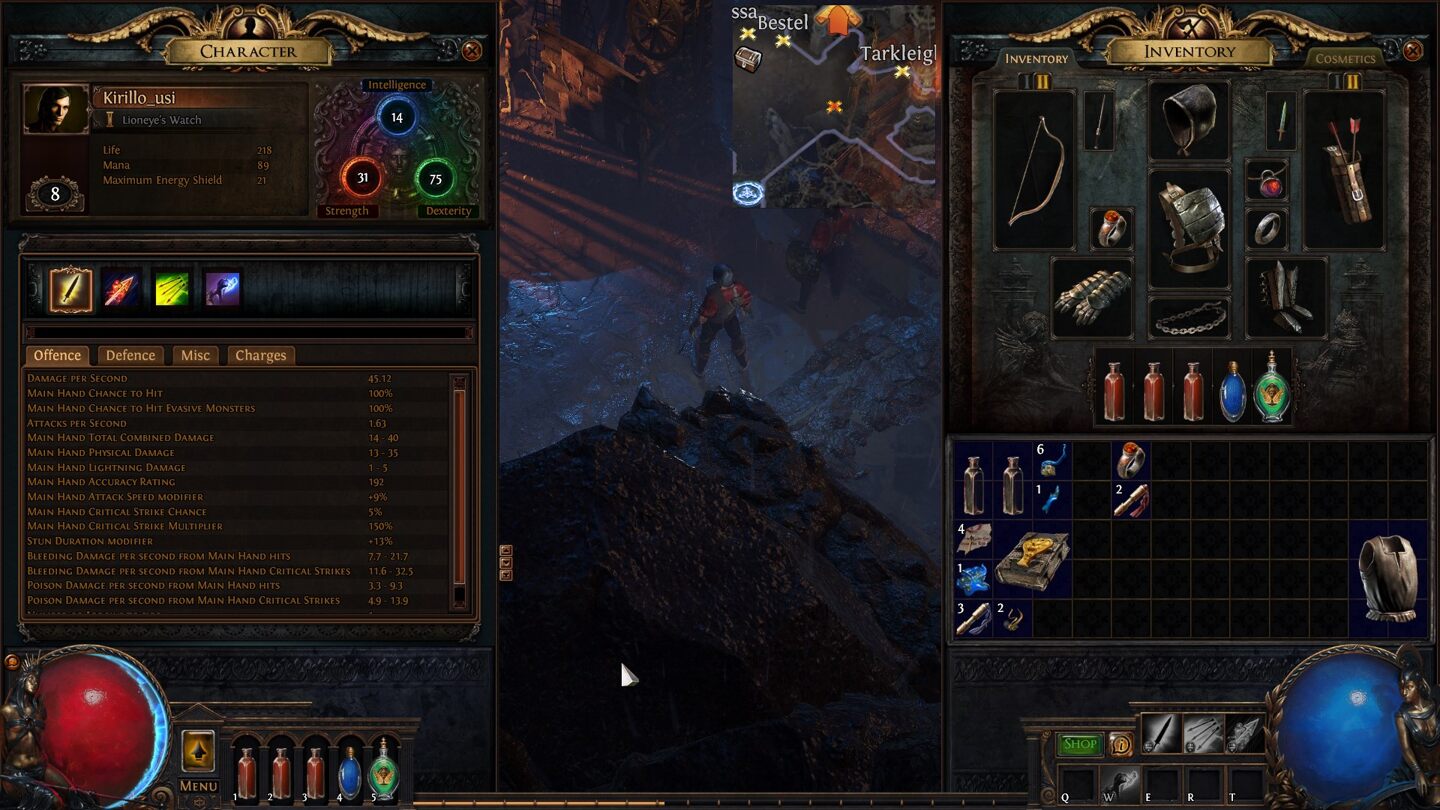
How it's played
Path of Exile is a pleasure to play. The game looks and sounds great, it's very easy to control your character in battle, and the battles look spectacular and beautiful. At the same time, unlike many other representatives of the genre, even in the initial stages the enemies do not seem to be all cannon fodder - many (and even more so the bosses) offer decent resistance.
Interesting and convenient turned out to be the trading system. It is based on barter - for valuable items we give scrolls and artifacts that affect the properties of the equipment. Moreover, an enumeration of these items turn into even more valuable, and we are to decide whether to continue to save them up or to exchange them for something from the trader.
Interesting and convenient turned out to be the trading system. It is based on barter - for valuable items we give scrolls and artifacts that affect the properties of the equipment. Moreover, an enumeration of these items turn into even more valuable, and we are to decide whether to continue to save them up or to exchange them for something from the trader.
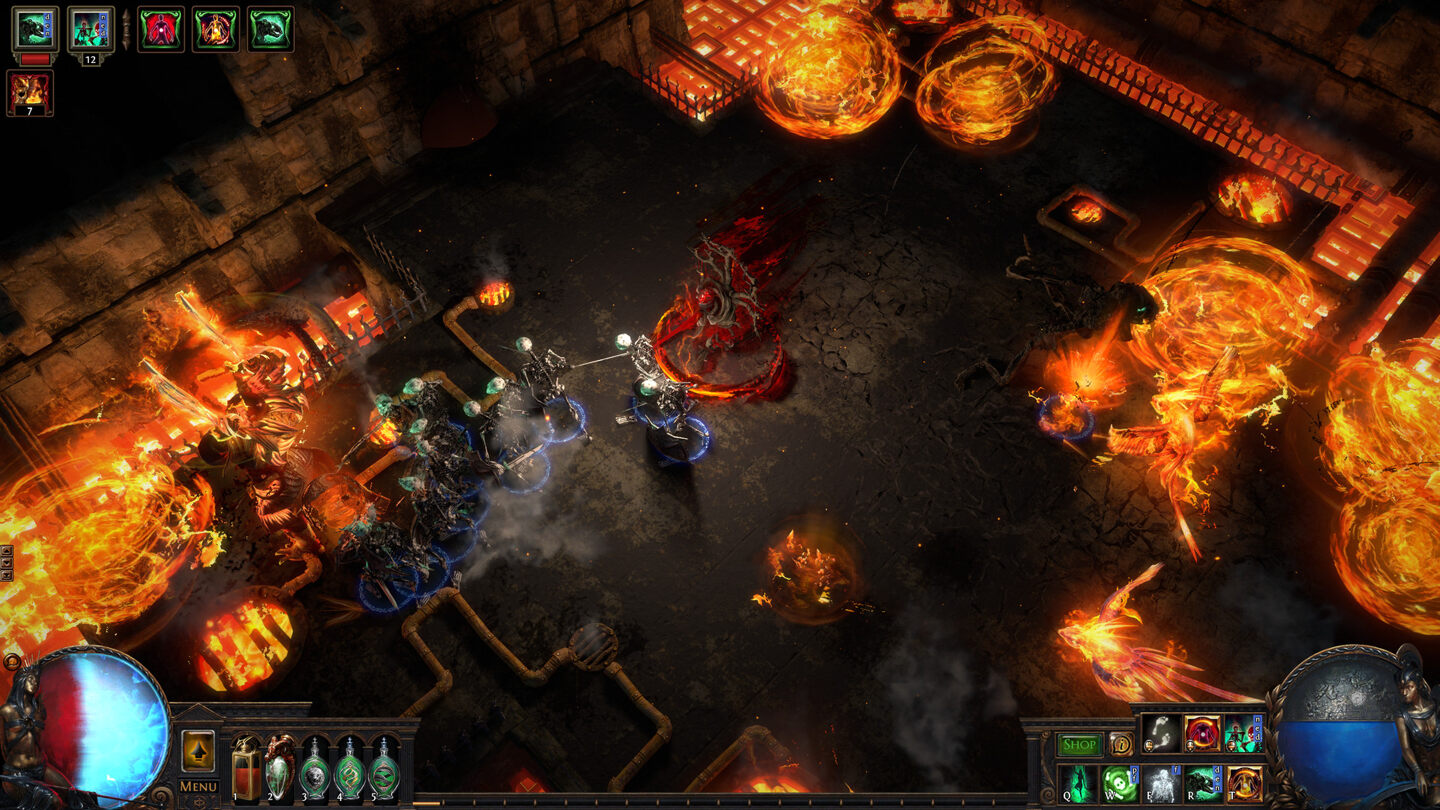
The game also attracts by the fact that it not only has interesting unique mechanics, affecting globally the gameplay - even the little things the authors have paid special attention. For example, you don't need to litter your inventory with a bunch of healing potions. All of them are reusable and are replenished as you kill your enemies.
Finally, Path of Exile, being a free-to-play game, offers a very flexible and again democratic system of microtransactions. There is no "pay to win" mechanic per se - mostly only cosmetic items are sold for living money.
Finally, Path of Exile, being a free-to-play game, offers a very flexible and again democratic system of microtransactions. There is no "pay to win" mechanic per se - mostly only cosmetic items are sold for living money.

Conclusion
As you can see, Path of Exile is considered one of the best online action/RPGs for a reason. A flexible and democratic approach to character development, an elaborated world, an abundance of various adventures and challenges for single player as well as for co-op, a lot of modes for battles between players, a lot of items of different rarity, which can be improved and change their properties, unique mechanics, an abundance of content for high-level players - all this is complemented by excellent graphics, convenient controls and democratic system of microtransactions. At the same time the game is constantly evolving, even 10 years after its release, with new modes, interesting events, tournaments and even races. The entry threshold, of course, is quite high, but it is definitely worth a try.
Zarium. March 2023
Zarium. March 2023
